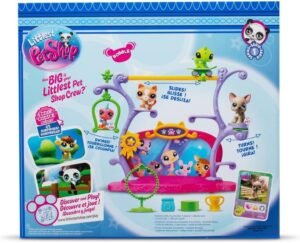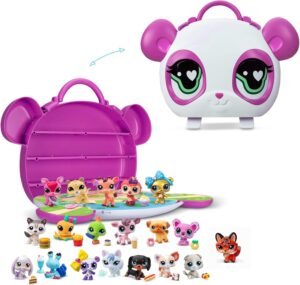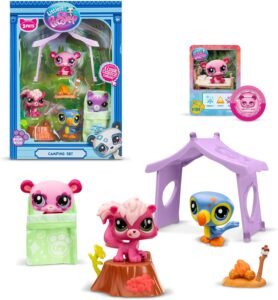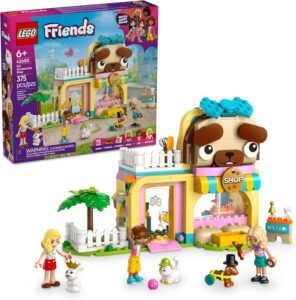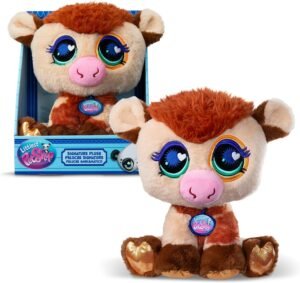Ensure a smooth transition for your new puppy with this checklist of 15 essential things you must do. From bedding and bowls to crates and collars, this comprehensive list covers all the basics necessary to make your furry friend feel at home.
Start by crate training and introducing your puppy to their designated potty spot, then gather items like food and water bowls, a collar and tag, and a lead. By following this checklist, you’ll be well-prepared to welcome your new addition and provide them with everything they need to thrive.
Preparing For A New Puppy
Welcome to the exciting world of puppy parenthood! Bringing a new puppy into your home is a joyous occasion, but it also requires careful preparation. Taking the time to gather all the necessary supplies and create a checklist will ensure that your puppy feels safe, comfortable, and loved from the moment they step paw into your home. In this article, we will guide you through the essential items, gear, toys, treats, and food you’ll need to prepare for your new furry family member.
Create A Checklist
Before bringing your new puppy home, it’s important to create a checklist of everything you’ll need to ensure their well-being. This checklist will not only help you stay organized but also give you peace of mind knowing that you have everything covered. Here are some important items to include:
- Food and water bowls
- A comfortable and cozy bed
- A crate or playpen for training and safe confinement
- Collar, leash, and identification tags
- Grooming supplies, such as a brush, shampoo, and nail clippers
- Potty training essentials like pee pads or outdoor potty training supplies
Essential Items For Bringing Home A Dog
Now that you have your checklist, let’s go over the essential items you’ll need to bring your new puppy home. These are the basics that will ensure your puppy’s comfort and safety:
- A cozy and well-padded dog bed where they can relax and sleep
- A crate or playpen that provides a secure space for your puppy when you can’t supervise
- Food and water bowls that are easily accessible for your puppy
- A collar with an identification tag containing your contact information
- A leash for walks and outdoor adventures
- A harness, especially for puppies who tend to pull on the leash
Gear You’ll Need For Your New Dog
In addition to the essential items, there are a few other gear items that will come in handy when caring for your new dog:
- Grooming supplies, including a brush, nail clippers, and shampoo
- Training tools, such as treats, clickers, and training mats
- A doggy first aid kit, complete with bandages, antiseptic ointment, and tweezers
- A pet gate to restrict access to certain areas of your home
- A doggy seatbelt or car harness for safe travels in the car
Toys And Treats For Puppies
Every puppy needs plenty of toys and treats to keep them entertained and happy. Here are some must-have toys and treats for your new furry friend:
- Chew toys, such as rubber or nylon toys, to satisfy your puppy’s natural urge to chew
- Plush toys for cuddling and comfort
- Puzzle toys to challenge your puppy’s problem-solving skills
- Treat-dispensing toys to keep your puppy mentally stimulated
- A variety of treats suitable for training and rewarding good behavior
Choosing The Right Food
Proper nutrition plays a crucial role in your puppy’s growth and development. When choosing the right food for your puppy, consider their breed, age, and any specific dietary needs they may have. It’s best to consult with a veterinarian to determine the appropriate diet for your furry friend.
Ensure that the food you choose is high-quality, balanced, and formulated specifically for puppies. Look for ingredients like real meat, fruits, and vegetables, and avoid artificial additives or fillers.
Remember, transitioning your puppy to a new food should be done gradually over a week or two to prevent digestive upset. Follow the feeding guidelines provided by the food manufacturer and monitor your puppy’s weight and overall health regularly.

Credit: topdogtips.com
The First Steps
Bringing a new puppy home is an exciting and joyful time for any family. However, it’s important to start off on the right foot by taking the necessary first steps to ensure your furry friend’s smooth transition into their new environment. In this section, we will discuss three key elements of the first steps: crate training, introducing the puppy to the home, and establishing a designated potty spot.
Crate Training
One of the most beneficial ways to help your new puppy feel safe and secure is through crate training. A crate serves as their “safe space” or “home base,” providing them with a cozy retreat where they can relax and sleep. It also helps establish boundaries and aids in housebreaking.
To begin crate training, introduce your puppy to the crate room in a positive and gentle manner. Make it an inviting space by placing soft bedding and a few toys inside. Encourage your puppy to explore the crate on their own, allowing them to associate it with positive experiences.
When it comes to leaving your puppy in the crate, always start with short intervals and gradually increase the duration as they become more comfortable. Remember to never use the crate as a form of punishment and always provide plenty of praise and rewards for good behavior.
Introducing To The Home
When bringing your new puppy home, it’s crucial to introduce them to their new surroundings in a calm and controlled manner. Start by letting them explore one room at a time, slowly expanding their access to the rest of the house. This gradual approach helps prevent overwhelming your puppy and allows them to become familiar with their new environment at their own pace.
Remove any potential hazards or poisonous plants from the area where your puppy will be roaming. Be sure to secure anything that could be dangerous or valuable to prevent any unwanted incidents.
Designate a safe space for your puppy, such as a cozy corner with their bed and some toys, where they can retreat to when they feel overwhelmed or tired. This will provide them with a sense of security and comfort.
Designated Potty Spot
Establishing a designated potty spot is an essential part of housebreaking your new puppy. Consistency is key here, so choose an area in your yard where you want your puppy to relieve themselves, and always take them to that same spot for bathroom breaks. This helps them associate that area with the need to potty.
Use positive reinforcement, such as praise or treats, to reward your puppy when they successfully use the designated potty spot. This will help reinforce the behavior and encourage them to continue using that spot in the future.
If you live in an apartment or don’t have a yard, you can designate a specific area indoors, such as a puppy pad or litter box. Remember to gradually transition them to outdoor potty breaks as they get older and more familiar with the routine.
Dos And Don’ts
Bringing home a new puppy is an exciting time for any family. However, it’s important to remember that taking care of a puppy requires responsibility and knowledge. To ensure a smooth transition and create a safe environment for your new furry friend, it’s crucial to understand the dos and don’ts of new puppy care. In this section, we will discuss the important dos and don’ts to consider when bringing a puppy home.
Dos For New Puppy Care
When it comes to new puppy care, there are certain actions you should take to ensure your puppy’s well-being and happiness:
- Set up a designated space: Create a cozy and comfortable space in your home for your puppy. This can be a crate, playpen, or a designated room where they can relax and feel safe.
- Establish a routine: Puppies thrive on routine, so establish a consistent schedule for feeding, potty breaks, playtime, and sleep. This will help them feel secure and learn what is expected of them.
- Socialize your puppy: Introduce your puppy to different people, animals, and environments from an early age. This will help them develop into well-rounded and confident dogs.
- Provide proper nutrition: Consult with a veterinarian to determine the best diet for your puppy’s specific needs. Ensure they have access to fresh water at all times and feed them a balanced diet suitable for their age and breed.
- Start training early: Begin basic training exercises as soon as you bring your puppy home. This includes teaching them commands, potty training, and basic manners.
Don’ts For Bringing A Puppy Home
Just as there are important dos, there are also things you should avoid when bringing a new puppy home. Here are some don’ts to keep in mind:
- Avoid leaving your puppy unattended: Puppies are curious and can get into mischief when left alone. Always supervise them or use a crate or playpen to keep them safe when you can’t give them your full attention.
- Avoid unsupervised interactions with other pets: Introduce your puppy to other pets gradually and under supervision. This will prevent potential conflicts and ensure a positive and safe environment for everyone.
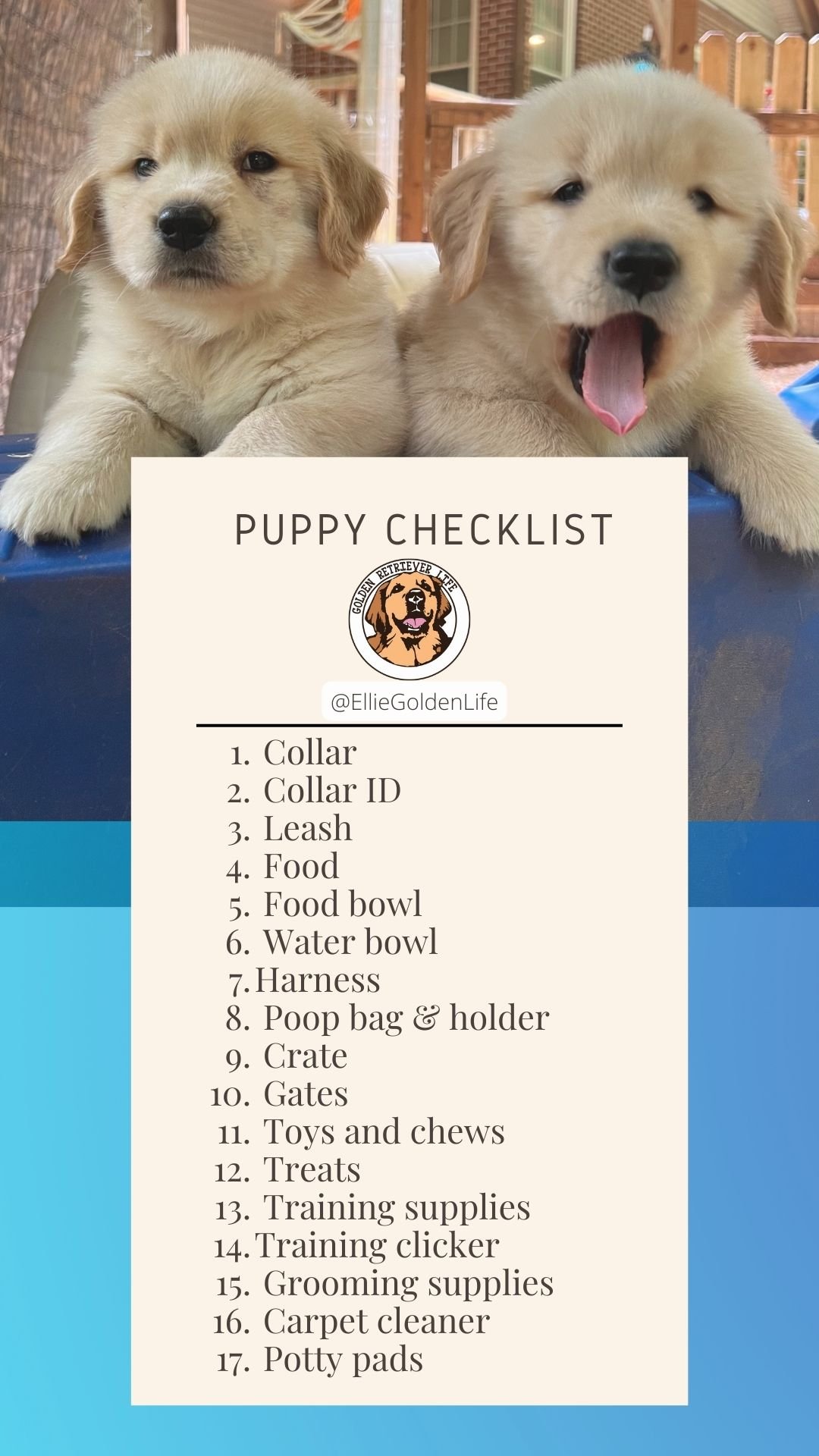
Credit: www.goldenretrieverlife.com
Providing Comfort And Safety
When you bring home a new puppy, it’s important to provide them with a safe and comfortable environment. This includes having the right bedding and crate, food and water bowls, collars and leads, car safety measures, and an identity tag. Let’s take a closer look at each of these essentials:
Bedding And Crate
Having a cozy and secure place for your puppy to sleep and relax is essential. A comfortable bed will help them feel safe and provide a designated spot for them to rest. Additionally, a crate is a useful tool for house training and creating a sense of security. It should be spacious enough for them to move around and should have a soft bedding to keep them comfortable.
Food And Water Bowls
Your puppy needs a dedicated set of food and water bowls. These should be clean and easily accessible. Make sure to choose bowls that are appropriate for your puppy’s size to avoid any discomfort while eating or drinking.
Collars And Leads
Collars and leads are important for keeping your puppy safe when you take them for walks or outings. Make sure to choose a collar that fits comfortably and securely around your puppy’s neck. A lead should be strong and durable, providing you with control while allowing your puppy to explore their surroundings.
Car Safety Measures
If you plan on traveling with your puppy, it’s crucial to have appropriate car safety measures in place. This can include using a car harness, a travelling crate, or a dog guard to ensure your puppy’s safety during car rides.
Identity Tag
An identity tag is a simple yet crucial accessory for your puppy. It should include your contact information so that in case your puppy gets lost, a kind stranger can easily contact you. This tag can be attached to your puppy’s collar at all times.
Health And Healthcare
When bringing home a new puppy, it is important to have the essential items to ensure their comfort and well-being. This new puppy checklist includes bedding, bowls, crates, clothing, collars, tags, and leads, among other necessities. Providing these items will help your new furry friend feel welcome in their new home.
Veterinary Check-up
One of the first things you should do after bringing your new puppy home is schedule a veterinary check-up. This is essential to ensure that your puppy is healthy and free from any underlying conditions. During the check-up, the veterinarian will perform a thorough examination, including checking for parasites, assessing their overall health, and providing any necessary vaccinations. It’s important to establish a good relationship with your veterinarian as they will be your go-to source for all your pet’s healthcare needs.
Vaccinations
Vaccinations are a vital part of your puppy’s healthcare routine. They help protect them from various diseases and illnesses. Your veterinarian will advise you on the vaccination schedule, which typically starts at around 6 to 8 weeks of age. Common vaccinations for puppies include distemper, parvovirus, hepatitis, and rabies. It’s important to keep up with these vaccinations to ensure your puppy’s immune system is strong and they are protected from potential threats.
Grooming Supplies
Grooming is an important aspect of your puppy’s overall health and well-being. It helps keep their coat clean and free from knots and tangles. To properly groom your puppy, you’ll need some essential supplies. These include a brush or comb suitable for their coat type, dog shampoo, nail clippers, and ear cleaning solution. Regular grooming not only keeps your puppy looking good but also allows you to check for any skin issues or abnormalities that may require veterinary attention.
Puppy-proofing The Home
Before bringing your new puppy home, it’s crucial to puppy-proof your living space to minimize potential hazards. Puppies are curious and prone to exploring their surroundings, often with their mouths. Start by securing any loose wires or cords, locking away cleaning products and chemicals, and removing any toxic plants from your home. Additionally, ensure that all small objects and potentially dangerous substances are out of reach. Creating a safe environment for your puppy will reduce the risk of accidents and injuries.

Credit: nevadawic.org
Frequently Asked Questions On New Puppy Checklist: 15 Things You Must Do
What Essential Items Do I Need For A New Puppy?
To ensure your new puppy feels comfortable, here are the essential items you’ll need: – Bedding – Bowls – Puppy crates, play pens, and child gates – Clothing – Collars – Car harness, traveling crate, or dog guard – Identity tag – Leads.
What’s The First Thing You Should Do When You Bring A New Puppy Home?
When you bring a new puppy home, the first thing you should do is start crate training. Introduce them to their crate and designate a specific potty spot in the yard. This helps establish a safe space and routine for your furry friend.
What Does A New Puppy Require?
A new puppy requires bedding, bowls, crates or play pens, clothing, collars, car harness or crate, identity tag, and leads. It is essential to crate train the puppy and introduce them to the designated potty spot in the yard. Food and water bowls, a complete puppy food, collar, tag, lead, and other essentials should be included in a checklist.
Avoid leaving the puppy unattended, taking them on walks, and allowing them to play freely without supervision. Chew toys and treat releasing toys are recommended for puppies.
What Not To Do When Bringing A Puppy Home?
When bringing a puppy home, remember these important things: 1. Don’t take them on walks right away. 2. Avoid taking them to pet stores early on. 3. Never leave them unsupervised inside or outside. 4. Don’t let them interact freely with other dogs without supervision.
Conclusion
When bringing a new puppy home, it is crucial to have all the essential items ready to make them feel comfortable and welcome. From bedding and bowls to crates and clothing, each item plays a vital role in their well-being.
Additionally, crate training should be initiated from the beginning, providing a safe and secure space for your fur baby. Remember to have a collar with an identity tag and a leash for walks. By following this checklist, you can ensure a smooth transition for your new furry friend into your family.
Happy puppy parenting!
